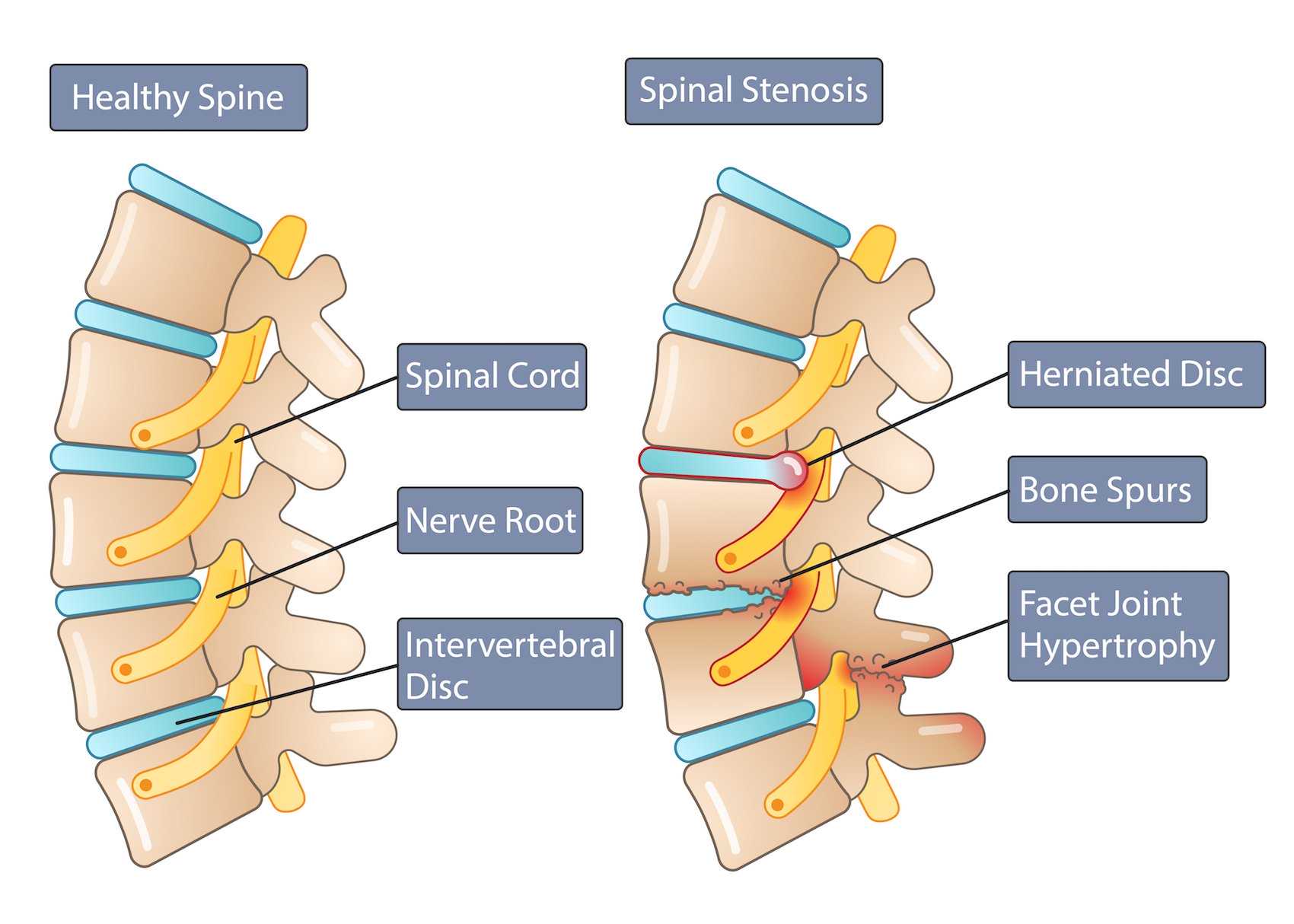
Lumbar Canal Stenosis Treatment – Restore Comfort & Mobility
Understanding Lumbar Canal Stenosis
The spinal canal houses the spinal cord and nerve roots, which transmit signals between the brain and body. In lumbar canal stenosis, the canal narrows due to factors like:
Age-related degeneration of spinal discs and joints
Herniated or bulging discs
Thickening of ligaments in the spinal canal
Osteoarthritis or bone spurs
This narrowing compresses the nerves, leading to symptoms such as:
Persistent lower back pain
Pain, tingling, or numbness in the legs (sciatica)
Weakness in the legs
Difficulty standing, walking, or maintaining posture
Reduced endurance for daily activities
The symptoms often worsen with activity and improve with rest, affecting patients’ lifestyle and overall health.
Comprehensive Diagnosis
Accurate diagnosis is critical for effective treatment. At Vidharbha Institute of Spine Surgery, we combine clinical evaluation with advanced imaging techniques to pinpoint the cause and severity of lumbar canal stenosis. Our diagnostic process includes:
Detailed Medical History: Understanding the onset, duration, and nature of symptoms
Physical Examination: Assessing nerve function, reflexes, and mobility
Imaging Tests: MRI, CT scan, and X-rays to visualize spinal canal narrowing, disc condition, and nerve compression
Electrodiagnostic Tests: EMG and nerve conduction studies to assess nerve involvement
This thorough evaluation allows our spine specialists to create a personalized treatment plan tailored to each patient’s condition and lifestyle.
Advanced Treatment Options
Treatment of lumbar canal stenosis depends on symptom severity, age, overall health, and response to conservative care. Our clinic offers a spectrum of treatments ranging from non-surgical approaches to minimally invasive and advanced surgical interventions:
1. Conservative & Non-Surgical Management
For patients with mild to moderate symptoms, we focus on pain relief, improved mobility, and lifestyle modification. These options include:
Physical Therapy: Targeted exercises to strengthen back muscles, improve posture, and reduce nerve compression
Medications: Anti-inflammatory drugs, pain relievers, and muscle relaxants
Epidural Steroid Injections: Minimally invasive injections to reduce inflammation and relieve pain
Lifestyle Adjustments: Weight management, ergonomic guidance, and activity modification
Conservative care aims to reduce discomfort and enhance function, but regular monitoring is essential to prevent symptom progression.
2. Minimally Invasive Surgery
When conservative measures fail or symptoms significantly impact daily life, our specialists recommend minimally invasive lumbar decompression. This approach removes pressure on the nerves without extensive tissue damage.
Benefits of minimally invasive surgery include:
Reduced operative risk and blood loss
Smaller incisions and faster recovery
Minimal post-operative pain
Preservation of spinal stability
Procedures may include laminectomy, microdiscectomy, or spinal fusion, depending on the patient’s condition.
3. Advanced Spinal Surgery
In severe cases with significant neurological impairment, our team performs state-of-the-art spinal surgeries using modern surgical tools and techniques. These surgeries aim to:
Relieve nerve compression effectively
Restore spinal alignment and stability
Improve walking ability and overall quality of life
Our spine surgeons are highly experienced in handling complex lumbar canal stenosis cases, ensuring precise outcomes with minimal complications.
Why Choose Vidharbha Institute of Spine Surgery?
Expert Spine Specialists: Our team has extensive experience in diagnosing and treating lumbar canal stenosis with high success rates.
State-of-the-Art Facilities: Equipped with advanced imaging, minimally invasive surgical tools, and post-operative care units.
Personalized Care: Each patient receives a customized treatment plan addressing their specific symptoms and lifestyle needs.
Comprehensive Rehabilitation: Our physiotherapy and rehabilitation programs support faster recovery and long-term spinal health.
Patient-Centric Approach: Emphasis on comfort, safety, and long-term functional outcomes.
Post-Treatment Care & Recovery
Successful management of lumbar canal stenosis extends beyond surgery or therapy. Our post-treatment program includes:
Pain management and anti-inflammatory medications
Physiotherapy to restore strength, flexibility, and mobility
Ergonomic and lifestyle guidance to prevent recurrence
Regular follow-up consultations and imaging to monitor spine health
With proper post-treatment care, most patients experience significant relief from pain, improved mobility, and a return to normal daily activities.
When to Seek Medical Help
Immediate consultation is advised if you experience:
Persistent lower back pain not relieved by rest or medication
Numbness, tingling, or weakness in legs
Loss of bladder or bowel control
Difficulty walking or standing for long periods
Early intervention can prevent progression, reduce complications, and improve outcomes significantly.
